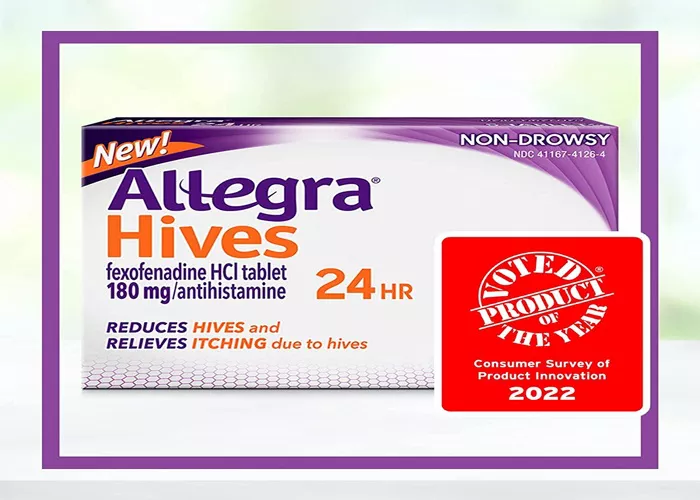Hives, or urticaria, are itchy, raised welts on the skin caused by allergies, stress, infections, or medications. They can be acute (lasting less than six weeks) or chronic (lasting more than six weeks). Antihistamines are the primary treatment for hives, as they block histamine, the chemical responsible for allergic reactions. This guide provides an overview of the strongest antihistamines for hives, their effectiveness, safety, and usage considerations.
Understanding Hives and Histamine
Hives occur when the body releases histamine, causing fluid to leak from blood vessels into the skin. This results in welts and itching. Antihistamines work by blocking histamine’s action at H1 receptors, reducing symptoms.
Types of Antihistamines
First-Generation Antihistamines: Examples include diphenhydramine (Benadryl) and hydroxyzine. They are effective but often cause drowsiness.
Second-Generation Antihistamines: Examples include cetirizine (Zyrtec), fexofenadine (Allegra), and levocetirizine (Xyzal). They are less sedating and longer-lasting.
The 5 Strongest Antihistamines for Hives
The strength of an antihistamine depends on its potency, duration of action, and side effect profile. Below are the strongest options:
Hydroxyzine (Atarax, Vistaril)
Mechanism: Blocks H1 receptors and has sedative effects.
Effectiveness: Highly effective for severe hives, including chronic urticaria.
Dosage: 25-100 mg daily, divided into doses.
Side Effects: Drowsiness, dry mouth, dizziness.
Considerations: Best used at night; not ideal for long-term use.
Cetirizine (Zyrtec)
Mechanism: Selectively blocks H1 receptors.
Effectiveness: Effective for acute and chronic hives.
Dosage: 10 mg once daily.
Side Effects: Mild drowsiness, headache.
Considerations: Suitable for long-term use.
Levocetirizine (Xyzal)
Mechanism: A more potent form of cetirizine.
Effectiveness: Highly effective for chronic hives.
Dosage: 5 mg once daily.
Side Effects: Low sedation.
Considerations: Preferred for its potency and low side effects.
Fexofenadine (Allegra)
Mechanism: Blocks H1 receptors without causing drowsiness.
Effectiveness: Effective for chronic hives.
Dosage: 180 mg once daily or 60 mg twice daily.
Side Effects: Minimal sedation.
Considerations: Ideal for long-term use.
Desloratadine (Clarinex)
Mechanism: A potent metabolite of loratadine.
Effectiveness: Effective for chronic hives.
Dosage: 5 mg once daily.
Side Effects: Low sedation.
Considerations: Suitable for long-term use.
Choosing the Right Antihistamine
The choice depends on:
Severity of Hives: Use hydroxyzine for severe hives; cetirizine or fexofenadine for mild cases.
Underlying Cause: Match the antihistamine to the trigger (e.g., hydroxyzine for chronic hives, cetirizine for allergies).
Patient Factors: Avoid sedating antihistamines in elderly patients or those with certain conditions (e.g., glaucoma).
Side Effects: Second-generation antihistamines are better for long-term use due to fewer side effects.
Safety and Side Effects
Common side effects include:
Drowsiness: More common with first-generation antihistamines.
Dry Mouth: Caused by anticholinergic effects.
Dizziness: Especially in elderly patients.
Blurred Vision: Due to anticholinergic properties.
Special Populations
Pregnant/Breastfeeding Women: Cetirizine and loratadine are generally safe; consult a doctor.
Children: Some antihistamines are approved for kids; adjust dosage.
Elderly Patients: Use second-generation antihistamines to avoid sedation.
Alternative Treatments
If antihistamines don’t work, consider:
Topical Treatments: Corticosteroid creams or calamine lotion.
Cool Compresses: To reduce itching and inflammation.
Phototherapy: For chronic hives.
Systemic Treatments: Oral corticosteroids or immunosuppressants for severe cases.
Conclusion
Antihistamines are the main treatment for hives. Hydroxyzine is the strongest but most sedating, while second-generation options like cetirizine and fexofenadine are safer for long-term use. Always consult a healthcare provider to choose the best option based on the severity of hives and individual health needs. For resistant cases, alternative treatments can provide relief.
Relative topics:
What to Know About Mustard Allergy
Why Aren’t Your Allergies Improving?
Natural Allergy Remedies: 5 Tips for Safety

